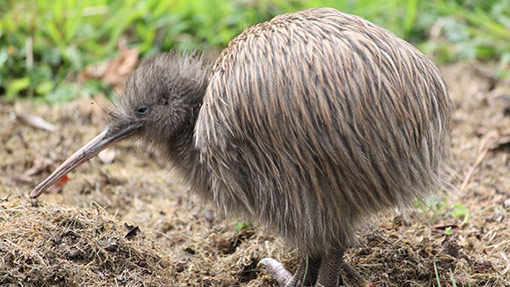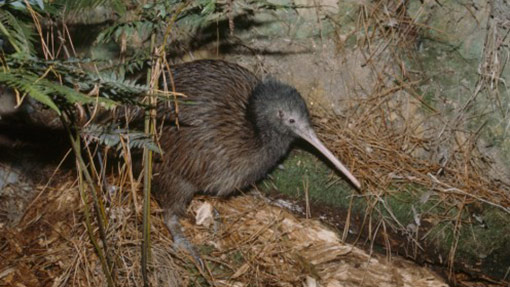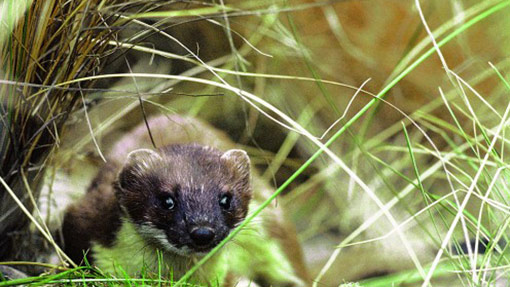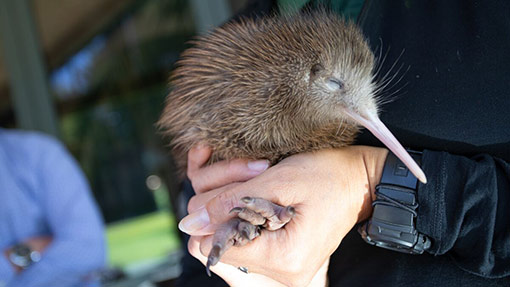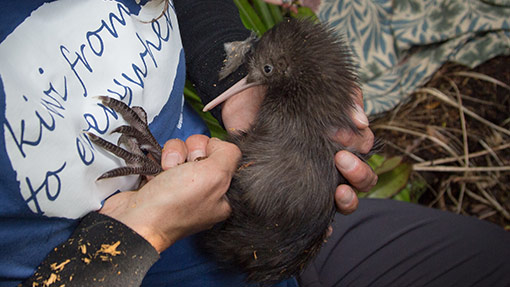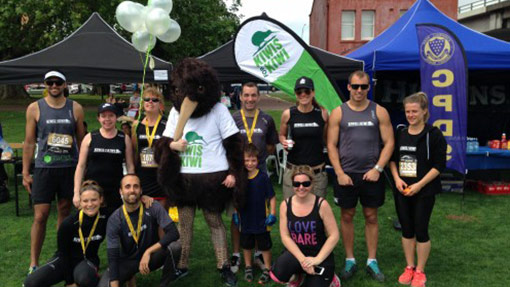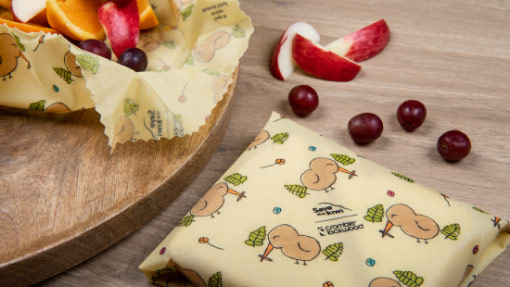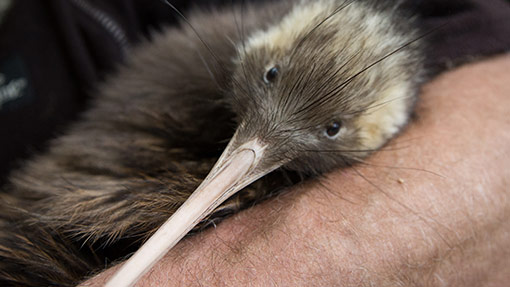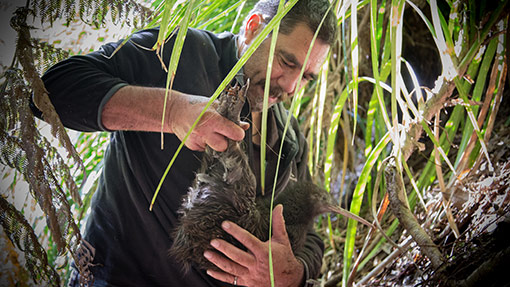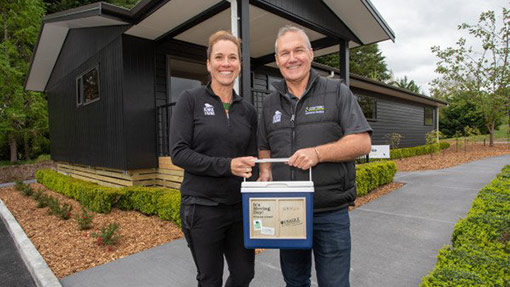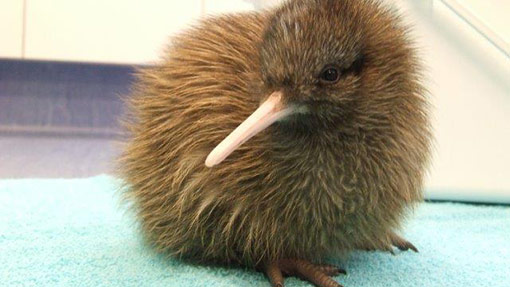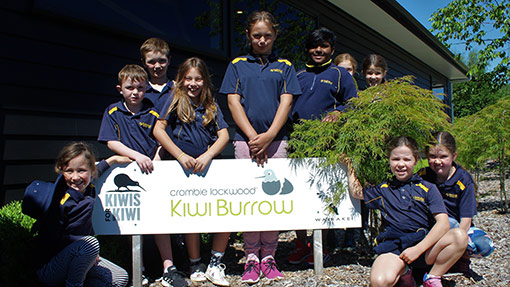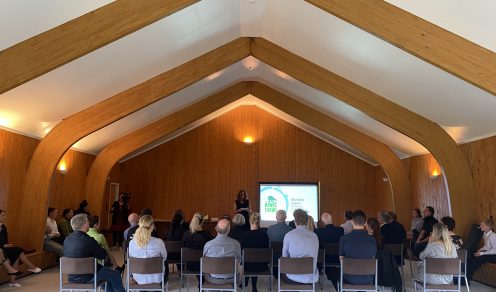Local employment in Taranaki is getting a significant boost over the next four years, with more than $2 million being invested in predator management and eradication, kiwi conservation, and upskilling for whānau, hapū and iwi groups in the area.
Yesterday, three Taranaki kiwi conservation projects were formally announced as being successful Jobs for Nature funding recipients, after funding was allocated by the Department of Conservation to the national kiwi charity Kiwis for kiwi to distribute to kiwi conservation groups all over Aotearoa. The announcement was made at a joint event at Pukearuhe Marae (Ngāti Tama) in North Taranaki.
Combined with strong mana whenua leadership and participation, the Jobs for Nature funding is expected to generate 40 full time equivalents (FTEs) and protect more than 12,200 hectares of predator managed forest.
Te Kōhanga Āhuru is a pest control collaboration between the three northern Taranaki iwi of Ngāti Tama, Ngāti Mutunga and Ngāti Maru. Te Kōhanga Āhuru project administrator Marlene Benson says this project will create sustainable employment for the wider whānau and hapū and ensure that the forests within their rohe are safe for kiwi.
“The three iwi involved in this project each have a deep attachment to the land,” Mrs Benson says. “It is really exciting that we can work together on such an important kaupapa that will breathe new life into te taiao.
“For years we have noticed a decline in bird song in the forest, but with support from Jobs for Nature we are excited to bring birds back, including the kiwi.”
Experience Pūrangi which is administered by the East Taranaki Environment Trust is a community conservation project that will expand their current work beyond the boundaries of their pest control area into the adjoining forest.
Experience Pūrangi general manager Rebecca Somerfield says their work will complement the work being carried out by Te Kōhanga Āhuru.
“We believe that many hands make light work,” says Mrs Somerfield. “By working alongside another project, we can together create more protected forest that will provide the ideal habitat for kiwi and other native taonga.”
The third project is a kiwi monitoring and handling training program run by Kiwis for kiwi, which will be utilised by both Te Kōhanga Āhuru and Experience Pūrangi, along with other projects in the Taranaki region, to train and upskill their staff.
Kiwis for kiwi western region coordinator and program administrator Michelle Bird says there will be a particular focus on mana whenua and field workers working in complementary disciplines such as predator control, forestry, and site-led conservation.
“Upskilling the people in place not only gives ownership to kiwi conservation efforts in the region, it also provides more employment opportunities to locals,” Mrs Bird says. “I am excited to work alongside these passionate projects who care deeply about both the future of the region’s forests and the future of the whenua.”
The Department of Conservation Taranaki operations manager Gareth Hopkins says the local DOC team has worked closely with their iwi partners to get these projects off the ground.
“Designed and led by tangata whenua, the projects will help provide a safe haven for kiwi and other native taonga over thousands of hectares of forest,” says Mr Hopkins. “This will lead to some great conservation outcomes for Taranaki.”
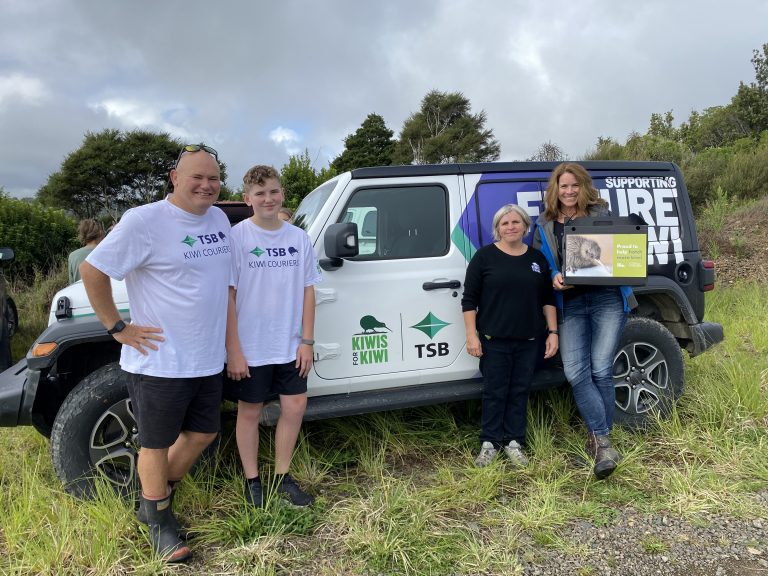
Kiwis for kiwi executive director Michelle Impey says while all three projects are independent and will run separately from each other, the fact that they will complement each other so well showcases the collaborative, can-do attitude of Aotearoa.
“Kiwi conservation brings people together, and we’re really pleased that these projects have been able to work together so closely,” Ms Impey says.
“Over the next four years, we will see a big increase in predator managed forest and kiwi-safe habitat, which will both create a safe haven for Aotearoa’s native wildlife and provide a much-needed employment boost in the region.”
Following the official project launch, representatives from each project released a juvenile kiwi into Parininihi Forest. The kiwi, known as “Timuaki”, had been hatched the Crombie Lockwood Kiwi Burrow in Wairakei, near Taupō, then crèched in the Wairakei Golf + Sanctuary until it reached a ‘stoat-proof’ weight of 1kg.
TSB sponsorship manager and ‘kiwi courier’ for the day Geoff Hitchcock says it was a privilege to be involved in the kiwi release.
“In September 2020, TSB joined the Kiwis for kiwi whānau as ‘kiwi couriers’,” said Mr Hitchcock. “We usually courier eggs that have been collected from the wild to the Crombie Lockwood Kiwi Burrow where they hatch and are raised, but this time we got to deliver a kiwi back to the whenua it came from.
“It’s truly an honour to work alongside Kiwis for kiwi in this important mahi, and it was a delight to see the fruits of everyone’s time and effort come to fruition by releasing this kiwi back into the wild.”
The Jobs for Nature programme is investing more than $1.245 billion in jobs for 11,000 people that will restore our rivers, protect precious places, and ensure our native wildlife thrives. The Department of Conservation is responsible for allocating $500 million to partners and projects that will create nature-based job opportunities for approximately 6,000 people over a four-year period.
Jobs for Nature funding for Kiwis for kiwi projects will create more than 200 full time equivalents (FTEs) over a five-year period and will supercharge kiwi conservation projects, including predator control, kiwi avoidance training for dogs, and Operation Nest Egg. The funding will be managed by Kiwis for kiwi, together with the Department of Conservation.
